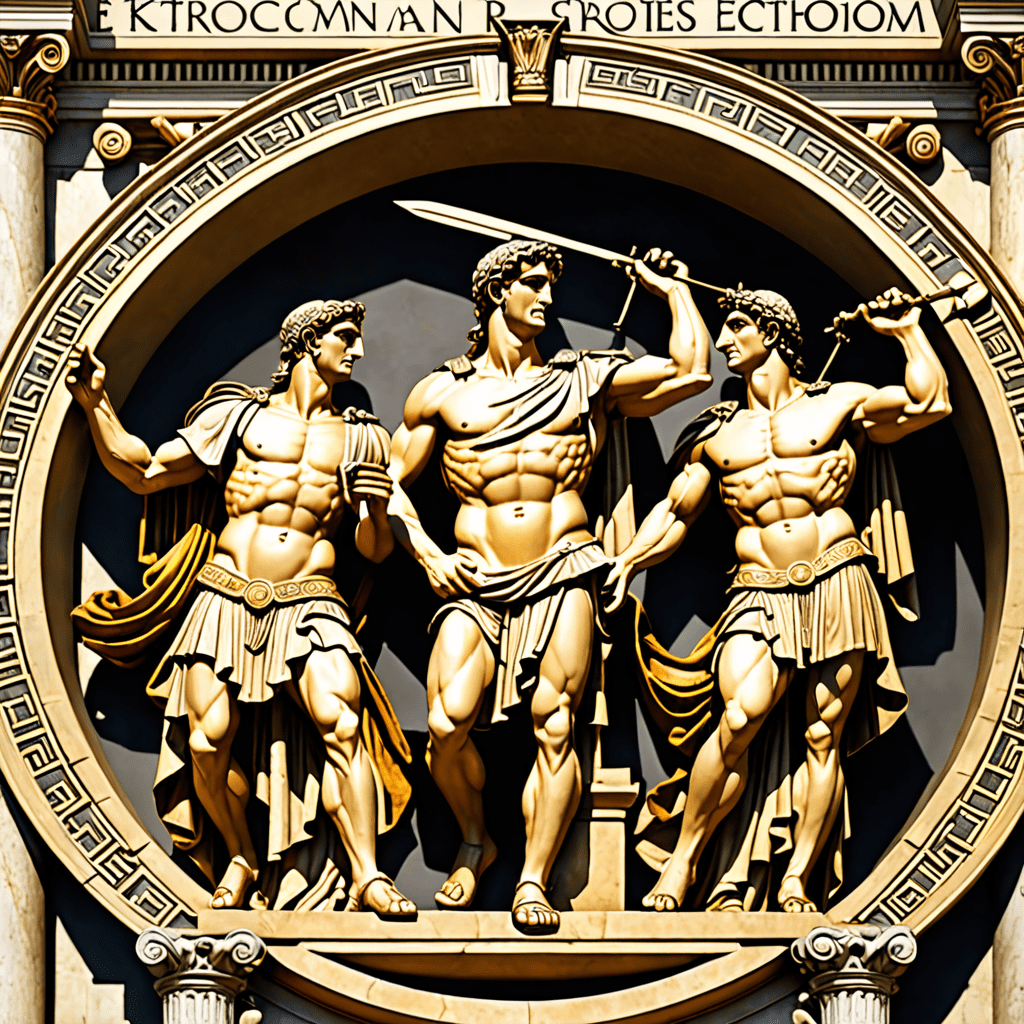Finnish Mythology: Tales of Betrayal and Redemption
I. Introduction: The Allure of Finnish Mythology
Finnish mythology captivates with its rich tapestry of betrayal, revenge, and redemption. These ancient tales intertwine with the very fabric of Finnish history, culture, and national identity. They offer timeless wisdom on the human condition, exploring universal themes such as the power of love, the sting of betrayal, and the resilience of the human spirit.
II. Creation Myth: Betrayal, Redemption, and the Birth of the World
The Finnish creation myth unfolds as a tale of treachery and hope. Ilmarinen, the master craftsman, is tasked with forging the dome of the sky, but he betrays his promise by using the stolen fire of Louhi, the matriarch of the underworld. As punishment, he is cast out and must seek redemption. In his journey, he encounters a golden eagle that guides him to the underworld, where he confronts Louhi and eventually earns her forgiveness. Through his arduous trial, Ilmarinen redeems himself and creates the heavens, ushering in the birth of the world.
III. Väinämöinen: The Wise Sage and Betrayal from Friends
Väinämöinen, the sage and hero of Finnish mythology, embodies both the brilliance of wisdom and the anguish of betrayal. As the creator of the harp and the master of the incantations, Väinämöinen wields immense power. However, his arrogance often leads him to underestimate his friends, who conspire against him. In one fateful episode, he is tricked into a trap and thrown into the sea, but his wisdom and the help of his faithful eagle saves him from death. Through these experiences, Väinämöinen learns the bitter sting of betrayal and the profound power of forgiveness.
IV. Kullervo: The Cursed Hero and Redemption
Kullervo, the tragic hero of Finnish mythology, personifies the destructive power of rage and the possibility of redemption. Cursed from birth, he endures a life filled with misfortune and violence, driven by an unquenchable thirst for revenge. His actions, both just and unjust, ultimately lead to the ruin of himself and those around him. However, amidst the chaos, there are glimpses of Kullervo's true nature – a brave warrior and a compassionate soul yearning for love and acceptance. His story serves as a poignant reminder that even those who have suffered greatly can find a glimmer of redemption in the darkest of times.
V. Lemminkäinen: The Trickster and Betrayal
Lemminkäinen, the cunning and adventurous trickster, embodies the mischievous and untamed aspects of Finnish mythology. His escapades often lead him into perilous situations, but his wit and daring usually save him from harm. However, his arrogance sometimes overtakes his wisdom, and he finds himself entangled in a cycle of betrayal and revenge. Through his adventures, Lemminkäinen learns the importance of loyalty, the sting of betrayal, and the consequences of his own actions.
VI. Louhi: The Matriarch and Betrayal of the Gods
Louhi, the enigmatic matriarch of the underworld, plays a formidable role in Finnish mythology. Her power rivals that of the gods, and she often schemes to thwart their plans. She is said to have stolen the moon and the sun, plunging the world into eternal darkness. Despite her antagonistic nature, Louhi possesses a complex character. She is both a fierce protector of her people and a jealous guardian of her underworld kingdom. Her actions, while driven by ambition, are ultimately motivated by a desire to preserve her domain.
VII. The Väinämöinen Cycle: A Tapestry of Betrayal and Redemption
The Väinämöinen Cycle, a central part of the Finnish national epic, the Kalevala, revolves around the trials and tribulations of the sage Väinämöinen. Through a series of adventures and challenges, Väinämöinen faces betrayals from friends, rivals, and even the gods. However, amidst these setbacks, he emerges as a figure of wisdom, compassion, and resilience. The cycle highlights the enduring human spirit and the power of redemption, even in the face of adversity.
VIII. The Kalevala: A Masterpiece of Finnish Mythology
The Kalevala, compiled by Elias Lönnrot in the 19th century, is a seminal work of Finnish literature that has had a profound impact on the nation's cultural identity. It is a collection of epic poems that narrate the adventures of heroes, gods, and mythological creatures. Betrayal and redemption are central themes throughout the Kalevala, reflecting the complexities of human nature and the enduring power of the human spirit. The epic's timeless storytelling and vivid imagery have captivated generations of readers and continue to inspire contemporary Finnish culture.
IX. Themes of Betrayal and Redemption in Finnish Mythology
Finnish mythology is deeply intertwined with the themes of betrayal and redemption. These themes resonate with the human experience, exploring the complexities of trust, loyalty, and forgiveness. Betrayal, whether intentional or unintentional, can shatter relationships and cause immeasurable pain. However, redemption offers the possibility of healing, reconciliation, and personal growth. Finnish mythology provides a rich tapestry of stories that delve into these universal themes, offering insights into the human condition and the enduring power of compassion.
X. Conclusion: The Enduring Power of Betrayal and Redemption in Finnish Culture
Betrayal and redemption are timeless themes that continue to shape Finnish culture and identity. From the ancient myths and legends to contemporary storytelling, these themes resonate with the human experience. Finnish mythology offers a profound exploration of the complexities of betrayal and the transformative power of redemption. Through these tales, Finns have grappled with universal human dilemmas, finding solace, inspiration, and a reminder that even in the darkest of times, hope and renewal are possible.
Frequently Asked Questions (FAQs)
Q: What is the significance of betrayal in Finnish mythology?
A: Betrayal is a central theme in Finnish mythology, as it explores the destructive power of disloyalty and the complexities of trust. It highlights the importance of loyalty, honesty, and the consequences of betrayal.
Q: How is redemption portrayed in Finnish myths and legends?
A: Redemption in Finnish mythology is often achieved through arduous trials, self-sacrifice, and acts of compassion. It emphasizes the transformative power of forgiveness, the resilience of the human spirit, and the possibility of personal growth even after significant setbacks.
Q: What are some of the most well-known stories of betrayal and redemption in Finnish mythology?
A: The Väinämöinen Cycle, the story of Kullervo, and the creation myth featuring Ilmarinen are prominent examples of betrayal and redemption in Finnish mythology. These tales offer timeless insights into the human condition and the enduring power of hope and renewal.
Q: How has Finnish mythology influenced contemporary Finnish culture?
A: Finnish mythology has had a profound impact on Finnish culture, shaping its national identity, literature, art, and music. Themes of betrayal and redemption continue to resonate in contemporary Finnish storytelling, reflecting the enduring power of these universal human experiences.



